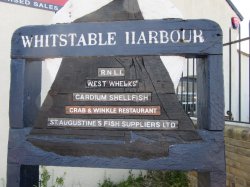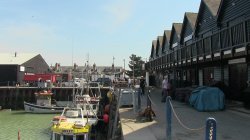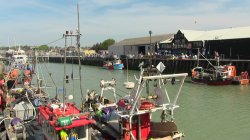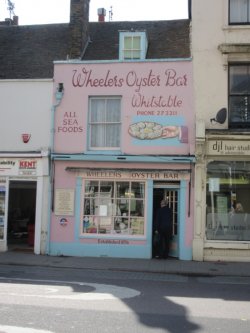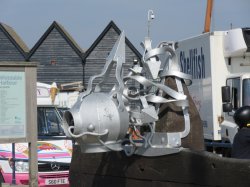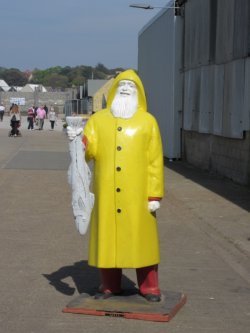 WHITSTABLE - Kent
WHITSTABLE - Kent
Whitstable is a seaside town on the north coast of Kent in south-east England, 5 miles (8 km) north of Canterbury and 2 miles (3 km) west of Herne Bay. It has a population of about 32,000.
Whitstable was famous for its 'Native Oysters' which were collected from beds beyond the low water mark from Roman times until the mid-20th century. This is celebrated at the annual Whitstable Oyster Festival, which takes place during the summer.
In 1830, one of the earliest passenger railway services was opened by the Canterbury and Whitstable Railway Company. In 1832, the company built a harbour and extended the line to handle coal and other bulk cargos for the City of Canterbury. The railway has since closed but the harbour still plays an important role in the town's economy. The railway route is now a bike path which leads to the neighbouring city of Canterbury.
History
Archaeological finds indicate that the Whitstable area was inhabited during the Palaeolithic era, the Bronze Age and the Iron Age. Oysters were harvested in the area in Roman times. The remains of a Roman building have been found in the centre of the town. Charters indicate that there were Saxon settlements where salt production and coastal trade occurred.
The town was first recorded in the Domesday Book of 1086, under the name Witenestaple, meaning "the meeting place of the white post", which referred to a local landmark. At that time, Witenestaple was the administrative centre of the hundred of Witenestaple[9] which stretched from the coast to the village of Blean, 3 kilometres (2 mi) north of Canterbury. In addition to Witenestaple, the hundred contained three manors at Seasalter, Northwood and Swalecliffe.
The Seasalter and Swalecliffe manors were owned by the church, and the manor at Northwood was run by a noble family on behalf of the king. Fisheries were located at the Seasalter manor, saltworks were at the Northwood manor, and pigs were farmed at the forest in Blean. By 1226, the name of the area had evolved into Whitstaple. Saltworks were opened at the Seasalter manor around the turn of the 14th century, and a sea wall was built there in 1325 to prevent coastal flooding. The history and development of the town has determined and been determined by the shape and location of the coast which has changed in a complex way over recorded history due to natural events and human interventions.
Click Picture to Zoom
 WHITSTABLE - Kent
WHITSTABLE - Kent
